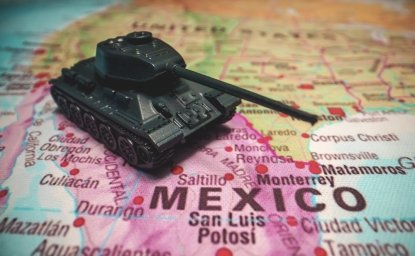Private companies are taking steps to build effective compliance systems aimed at preventing corrupt practices and at protecting companies from liability for illegal behavior by staff or contractors. Gonzalo Smith, the chief legal and governance officer for S.A.C.I. Falabella, a Chilean multinational corporation, explains how such efforts can help inoculate a company against corruption while also helping to fortify public institutions.
Falabella, headquartered in Santiago, Chile, has operations in Argentina, Brazil, Chile, Colombia, Mexico, Peru, and Uruguay. Falabella’s holding company is the largest corporation traded on the Santiago stock exchange, with a market cap in excess of $23 billion. The company grew out of a small family-owned business founded in the late 19th century and the majority of the company’s current controllers are relatives of the founding family. Falabella operates department stores, home improvement stores, supermarkets, financial service companies, banks, travel agencies, insurance brokers, an insurance company, shopping malls, and other commercial real estate. The company has 107,000 direct employees and consolidated revenues in 2016 totaled $12.8 billion.
First, I will provide a perspective on the impact that new rules and regulations against corruption have had on companies in Latin America, specifically multilatinas. Second, I will offer a sense of what seems to be working well on the corporate side in the fight against corruption and suggest what further steps could contribute to further progress.
International and Domestic Law
The systematic fight against corruption is fairly recent. Indeed, the Inter- American Convention against Corruption was only adopted in 1996. A few Latin American countries are still not signatories, but almost all signed and ratified the convention between 1996 and 2004. In addition, the Organization for Economic Cooperation and Development’s (OECD’s) Convention on Combating Bribery of Foreign Officials in International Business Transactions was adopted in 1997 and entered into force in 1999. Mexico and Chile are the only two Latin American members of the OECD. But the good news is that the OECD convention has been adopted by eight non-OECD countries, four of which—remarkably—are Latin American: Argentina, Brazil, Colombia, and Costa Rica.
The good news is that the OECD convention has been adopted by eight non-OECD countries, four of which—remarkably—are Latin America: Argentina, Brazil, Colombia, and Costa Rica.
Virtually all countries in Latin America have started adapting their laws to fulfill the commitments contained in these conventions. Naturally, some seem to have done so with greater zeal than others. It is important to bear in mind that these adaptations have not, for the most part, criminalized bribery. That is because bribing a government official has been a crime in most Latin American countries since the Códigos Penales (criminal codes) were first written.
There are two aspects of these recent changes that are truly novel compared to what existed before:
The first consists of making legal entities legally capable of a crime. While this sounds almost trivial, it was only after much debate by legal scholars, and a fair amount of intellectual pain, that it was admitted that a legal entity could be capable of committing a crime. Because legal entities lack a will of their own, it was hard to argue that they are capable of criminal intent. This technical debate was never truly resolved, but it became irrelevant from a practical standpoint. That is because, from a public policy perspective, legislators deemed that the goal of fighting corruption made it worthwhile to overlook the technical issue of whether you could attribute intent to legal entities.
The second legislative change is remarkable, though it has not been adopted by all signatories to the Inter-American and OECD conventions against corruption. This adaptation involves creating a safe harbor against criminal liability for legal entities who can show that they exercised proper diligence prior to the acts that could result in criminal liability, through the adoption and implementation of systems to prevent the occurrence of crimes.
In other words, if you have an effective anti-crime compliance system within your organization your company can dodge criminal liability. Chile is one of the countries that has adopted this change. Because of that and because of my familiarity with the Chilean case, my subsequent comments refer mostly to the Chile.
How the Safe-Harbor Model Works
Safe harbor from criminal liability translates into a model for the prevention of crimes within legal entities. This model consists of a series of structural, behavioral, and procedural measures and steps within companies that, when properly applied, make it much harder for a crime to occur within the organization.
Bribery is one of those crimes but not the only one. In the case of Chile, corporate criminal liability can exist relative to the bribery of government officials (at home or abroad), money laundering, financing of terrorism, and knowingly trading in stolen goods. The potential for criminal liability for money laundering and financing of terrorism requires the adoption of preventive measures for a series of other crimes related to them.
There is a long list of measures that must be adopted in order for a crime prevention system within an organization to be effective. Some of the most important aspects include:
- The appointment of an officer in charge of the program who has direct access to the CEO, monitors the system day in day out, reports to the company’s board at least twice a year, and has sufficient resources relative to the size and complexity of the organization;
- Implementation of methods to prevent crimes, such as risk assessments of processes and procedures vulnerable to corruption; the establishment of protocols, rules, and procedures for these at-risk procedures; accounting and financial controls to prevent financial resources from being used to commit crimes; and help lines for the reporting of potential criminal activity.
- Certification of systems or models by independent specialized agencies and at regular intervals, something that provides an extra layer of protection from an evidentiary perspective.
Clearly, the list of measures for an effective system is much longer and includes such things as third party intermediary due diligence, business partner due diligence, specific contractual provisions against bribery in all contracts, protocols for communicating with government officials, etc.
Why It Works
The true merit of the safe harbor mechanism is how it impacts corporate culture. It creates an incentive to change not only what is done, but also how it is done. Corporate culture is something that companies do well and are used to managing on a daily basis. When compliance is based on culture, the behavior no longer feels like an obligation. Instead, there is an internal drive to follow process and procedure, something that companies know how to do.
When compliance is based on culture, the behavior no longer feels like an obligation. Instead, there is an internal drive to follow process and procedure, something that companies know how to do.
Too little time has gone by to measure the true effectiveness of the changes put in place. But they do have the merit of keeping everyone on his or her toes, to ensure that the model for prevention of crimes is working effectively.
Another positive aspect of the safe harbor system is that, because it mandates specific actions, the model is comparable across companies of similar sizes. Thus, the standard is open to continuous improvement, as no company can afford to be the laggard.
Lessons for the Public Sector
From a corporate perspective, what further steps could be taken to strengthen the fight against corruption? I believe there are two things that would be enormously effective.
First, as we all know, bribes are paid because bribes are taken. Every bribe has someone who offers and someone who accepts, a payer and a payee. Neither side is a victim. When a bribe is offered, paid, solicited, or taken, both parties are responsible.
Bribes are paid because bribes are taken. Neither side is a victim.
Seeing how the safe harbor system has caused systematic changes within companies and has institutionalized responsibility, I cannot but think that similar institutional incentives within the public sector could go a long way in preventing corruption. (This is distinct from criminal sanctions applied directly to a corrupt public official.)
The system devised for private companies cannot be applied in mirror image to the public sector. There are important differences: the ultimate price to be paid by a company for corruption—its dissolution—is not something that can necessarily be applied to the public sector. Other penalties, such as fines, should also be different. When someone within a company pays a bribe, it is usually for the benefit of the company; but when someone in the government takes a bribe, it is usually for personal or political gain.
Despite these differences, I see no substantive reason that the public sector and its leaders should not be held institutionally accountable for failing to implement systems to prevent corruption. Institutional incentives in the public sector could and should make the organization and its leaders liable if corruption occurs. This is how pliers work, by applying pressure on both sides.
Institutional incentives in the public sector could and should make the organization and its leaders liable if corruption occurs.
Simply banning bribery did not work for a very long time, over 200 years. Now that active, preventive obligations seem to be working in the private sector, it seems only natural that the same approach should be adopted in the public sector. Imagine how different things would be if liability for taking a bribe fell on a public institution or its leaders, unless there were an effective model for preventing such crimes in place.
Private Corruption
Second is the big issue of commercial or private bribery and corruption. Not having proper legal tools to prosecute private bribery or corruption within companies is a deeply frustrating experience for companies themselves. Legal scholars have traditionally argued that, in the absence of another crime such as embezzlement, private bribery is not a crime, not only because there is a lack of public interest, but also because there is no strict cause and effect between the voluntary payment of a bribe by a third party and damages to an entity whose employee took a bribe. The traditional perspective has been to view such matters as a management problem.
This seems to be a narrow and outdated perspective. Though there may be no public economic involvement in privately-held companies, this cannot be said of publicly-traded corporations, which receive public funds either in the form of equity or debt. The creation of corporate cultures based on integrity should be considered a matter of public interest. The fact that corrupt payments have very dissimilar legal treatments depending on who it is that receives the bribe does not help at all.
It is very difficult to explain within an organization why certain actions involving a government official can land you in jail, but are almost impossible to prosecute when the other party to a corrupt act is a private client, supplier, or contractor.
It is very difficult to explain within an organization why certain actions involving a government official can land you in jail, but are almost impossible to prosecute when the other party to a corrupt act is a private client, supplier, or contractor. This dichotomy is extremely damaging and constitutes a major obstacle to the implementation of effective control environments within organizations. Legislators are starting to consider the criminalization of private corruption in Latin America. However, I believe that the issue of private corruption is not yet regarded as an integral part of the fight against corruption in the public sector. Public and private should go hand-in-hand.
The Right Incentives
Over the last 20 or so years, there has been crucial and meaningful progress. Having more laws and regulations is not what has truly made a change. Rather, it is having the right laws, regulations, and incentives. Drawing on elements that are innate to corporate life has been crucial.
Nothing has been more effective than requiring specific actions regarding structure, process, and procedure in order to provide for adequate monitoring and an effective system for prevention. These actions must be coupled with incentives for making the measures work. Implanting a corporate culture of preventing corruption has been key.
A corporate culture of cleanliness keeps the food industry running well; a culture of maintenance keeps planes in the air; a culture of safety keeps miners out of harm’s way. A culture of integrity is an integral part of the fight against corruption. Safe harbor systems based on prevention have provided the right incentives to go beyond what has been done in the past.
Extending this kind of active diligence to the public sector and completing the picture by criminalizing private corruption would be extremely useful in furthering the fight against corruption.





